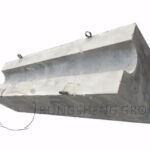Refractory gunning material is an unshaped refractory material used to repair the lining of thermal equipment using spraying construction methods. It is composed of refractory aggregates, binders and admixtures proportioned according to particle gradation, including active coagulants, sintering aids mineralizers, etc.). Generally they are thermosetting or air-setting materials. Gunmetal repair is usually a repair method used when a small part of the interior of the furnace lining is prematurely damaged, but most of it is still relatively complete. It can achieve balanced damage to the furnace lining. Its characteristics are that the construction is simple, the construction period is short, and the construction does not require templates and formwork. It can effectively extend the life of the furnace lining and reduce the consumption of refractory materials.

Coke Oven Refractory Gunning Material Coating Materials – high temperature resistant adhesive products
The high-temperature resistant adhesive can be used for hot repair of unevenness, erosion, cracks, melting, and falling bricks in the coke oven carbonization chamber and other parts. This product has high refractoriness, high flexural strength, good adhesion, easy hanging and long hanging time. No bubbles or cracks, strong wear resistance, and good construction performance.
Performance Advantages of Coke Oven Refractory Gunning Materials
- Good high-temperature performance. When using this product to repair coke ovens, there is no need to cool down, just spray the repair directly and then put it into operation. It greatly shortens the coke oven repair time, reduces production costs, improves work efficiency, and has obvious energy-saving effects.
- Under the action of a high temperature of 1000℃, this product has high bonding strength with the silica bricks in the coke oven carbonization chamber. It is also wear-resistant, shock-resistant, peel-resistant, strong and durable.
- On-site construction is convenient and not affected by seasonal temperature.
- Long service life, its service life is 7-10 times that of similar products currently used in China, and the hanging time is longer.
Coke oven refractory gunning material coating material – high-temperature resistant binder product overcomes the characteristics of large pores, poor wear resistance and short hanging time of similar products on the market. The high-temperature-resistant binder for coke ovens is acidic and should be stirred evenly before use. When repairing the wall of the gunnery furnace, the wall should be cleaned first to make the mud easy to hang. Clean it before spraying. The spraying surface should be flat and smooth and should not be higher than the wall. When the adhesive is relatively viscous, you can add a small amount of water to dilute it before use.

Refractory Spray Paint Lining Construction
Start by welding metal grabber nails or metal mesh to the furnace shell. Load the refractory spray paint that is dry-mixed or semi-dry-mixed with a forced mixer into the spray machine. Use compressed air (wind pressure is 0.10~0.15MPa) to send the mixture to the nozzle. Add an appropriate amount of water or chemical binding agent to mix with the material, and spray it to the sprayed surface. The nozzle outlet should be perpendicular to the sprayed surface, and the distance should be 1 to 1.5m. The spraying of the lining should be carried out continuously, and the thickness of each spraying layer should be less than 200mm. When the lining is too thick, it should be sprayed in layers, but it must be done after the previous layer has sufficient strength. After the lining is sprayed, level the working surface in time and remove the rebound material. The maintenance and baking of refractory spray paint linings are the same as those of refractory castable linings.
What is flame spraying material? Flame gunned material is a shaped refractory material composed of refractory powder, combustion accelerant, and sintering agent.
Compared with other gunning and spraying, flame gunning has strong gunning ability, short time, and fast drying. Gunmetal has the characteristics of high volume density, relatively low porosity, and long service life.
The main raw materials of flame spraying materials are magnesia, magnesia dolomite, and magnesia chromium sand. The sintering agents used are soft clay, bentonite, and silica fume. The combustion accelerant is coke powder, aluminum powder, etc. The flame gunning layer is used as the refractory slag layer, which is to protect the refractory brick layer with lining and hanging slag.

Flame spraying materials are mainly used in the slag line and furnace cap of the converter and are also used in steelmaking electric furnaces and ladles. When gunning on the converter, gunning can be carried out when the lining temperature is around 1500°C, and the gunning time is 4-7 minutes. That is to say, spraying can be carried out directly without stopping the furnace.
Gun spraying is carried out using a spray gun, and there are two methods of gunning: horizontal and vertical. When gunning in the converter, gunning can be started after tapping and pouring slag. At first, the spray gun jacket needs to be cooled with water, and then the spray gun can be moved up and down, or it can be rotated and inserted into the furnace. After oxygen supply and spraying, the material is sprayed out from the nozzle of the spray gun.
Because the combustible gas and oxygen mix and burn, the combustion accelerant ignites. The flame-spraying material is melted within a distance of 1.5mm and then sprayed onto the sprayed surface. Then it is sprayed into a gunning layer. After spraying, it can be loaded and used immediately without baking.
Flame spraying materials for converter linings have been developed and used in my country for more than ten years, and the results have been good. However, the use of other furnace linings has not been significantly developed and used. Because the construction of the spray gun is subject to certain restrictions and it is inconvenient to transport it back and forth, it is only used fixedly on some converters. Other furnace lining developments have not yet used this gunning method.









